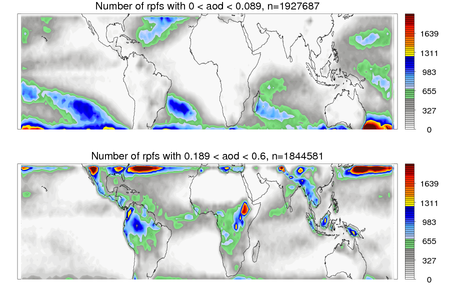Christy Wall
Postdoctoral Researcher
Sample menu:
Upcoming Talks:
Dec 9, 2013:
AGU Fall Meeting,
San Francisco, CA
Current Research
Currently I am using TRMM, CloudSat, and the ERA-Interim to look at global convection. At the University of Utah, we have a unique TRMM Database (for more information, click here) that allows us to look at convection observed by TRMM on a feature-by-feature basis. Additionally, I have developed a database of CloudSat cloud features which are also identified by contiguous pixels of reflectivity. These powerful tools allow us to characterize global convection and answer important questions about the distribution of precipitation, which types of features produce the most precipitation, and the types of environments in which they form.
My past work has centered around the very difficult problem of aerosols and convection. Convective cloud microphysics, and therefore satellite rainfall retrievals, depend fundamentally on cloud dynamics, but also to a significant, uncertain extent on whether the convection is growing in a clean or aerosol-rich environment. The impact of aerosols on the microphysical and dynamic properties of clouds has become an important and controversial topic. How microphysical changes brought about by aerosols affect the structure and dynamic properties of convective clouds remains uncertain.
TRMM and satellites on the A-Train constellation can be used to observe (and quantify) the effect of aerosols on convection. I obtained aerosol information from Aqua MODIS, including aerosol optical depth, angstrom exponent, and aerosol index and collocated these data with radar precipitation features (RPFs) from the TRMM Database and cloud features (CFs) from the CloudSat Database. TRMM was used to examine deeper convective features, while CloudSat was used to study congestus. Different types of clouds have different "modificationability".
